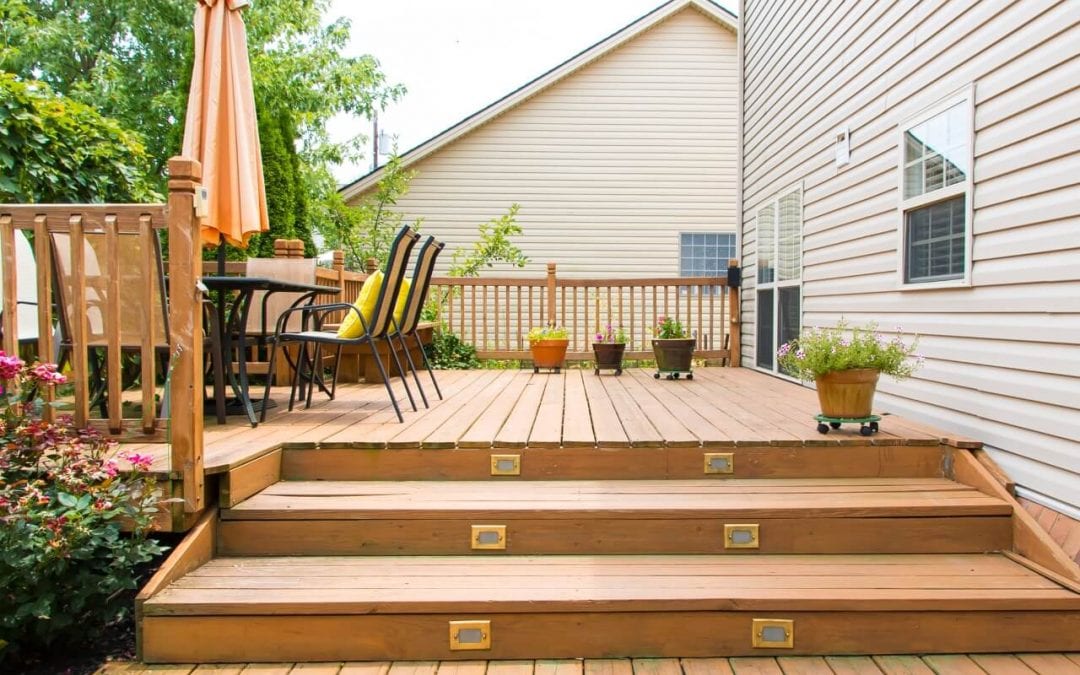Pressure-Treated Lumber
Of all the types of decking materials, pressure-treated wood is the most popular option because it is inexpensive and easy to find. The pressure treatment process makes this type of wood resistant to insects, mold, and rot. Wood is easy to work with and very affordable, costing around $1.50 to $2.50 per square foot.
The disadvantages are that pressure-treated wood tends to warp, splinter, and crack over time, and it needs to be treated annually. With regular maintenance, your deck will last about 15 years.
Cedar
Cedar is a popular material because of its rich color. This is a great choice if your area often has inclement weather. Cedar is strong and resistant to rot because of the naturally-occurring tannins and oils. Splinters and cracks can be prevented by applying sealers and stains.
Cedar is a more expensive decking option, averaging $4 to $5 per square foot. Different grades of the material affect performance and price.
Types of Decking Materials: Redwood
Similar to cedar, redwood provides a beautiful, natural look. It is lightweight, with gorgeous color and a strong finish.
Redwood is harder to find than cedar. Plus, it is an even more expensive choice, coming in at $6 to $8 per square foot. You’ll need to pressure wash redwood annually and apply a fresh finish once every four to five years.
Tropical Hardwood
Tropical hardwood gives your deck a more luxurious look and feel than other types of decking materials. This is a quality choice for those with a healthy budget who want to build a deck that is strong, attractive, and durable. Tropical hardwood is naturally resistant to insects and rotting.
Tropical hardwood is expensive, priced around $8 to $12 per square foot. It’s difficult to finish or stain tropical woods because they’re so dense. It needs to be maintained with UV-blocking preservatives every few years, otherwise, the deck will fade to a silvery hue.
Aluminum Types of Decking Material
Aluminum decking materials won’t splinter, warp, crack, or rot. They are mold and insect-resistant and the material never blisters or peels. It is extremely lightweight and relatively easy to work with.
The downside is the price. At over $10 per square foot, aluminum is one of the more expensive options. It has a modern, industrial look that doesn’t appeal to everyone and aluminum decking lacks the natural attractiveness of hardwoods.
Composites
Composite decking is made from a blend of wood and plastic particles. It doesn’t splinter easily and won’t warp like some wooden materials. Composites are low maintenance and resist insects and rot.
Because they do contain wood, composite decking can mildew or mold if it remains damp. Like wood, it will show signs of aging and decay over time. Composites can also get hot in the warm sun. Price-wise, they cost up to $10 per square foot.
If you’re planning to build a new deck, you have several great options for materials. Look at the pros and cons of each and choose one that matches the style and aesthetic of your home and fits your budget.
Digs Doctor Home Inspections provides inspection services to Charlotte and the surrounding areas of North and South Carolina. Contact us to request an appointment.

